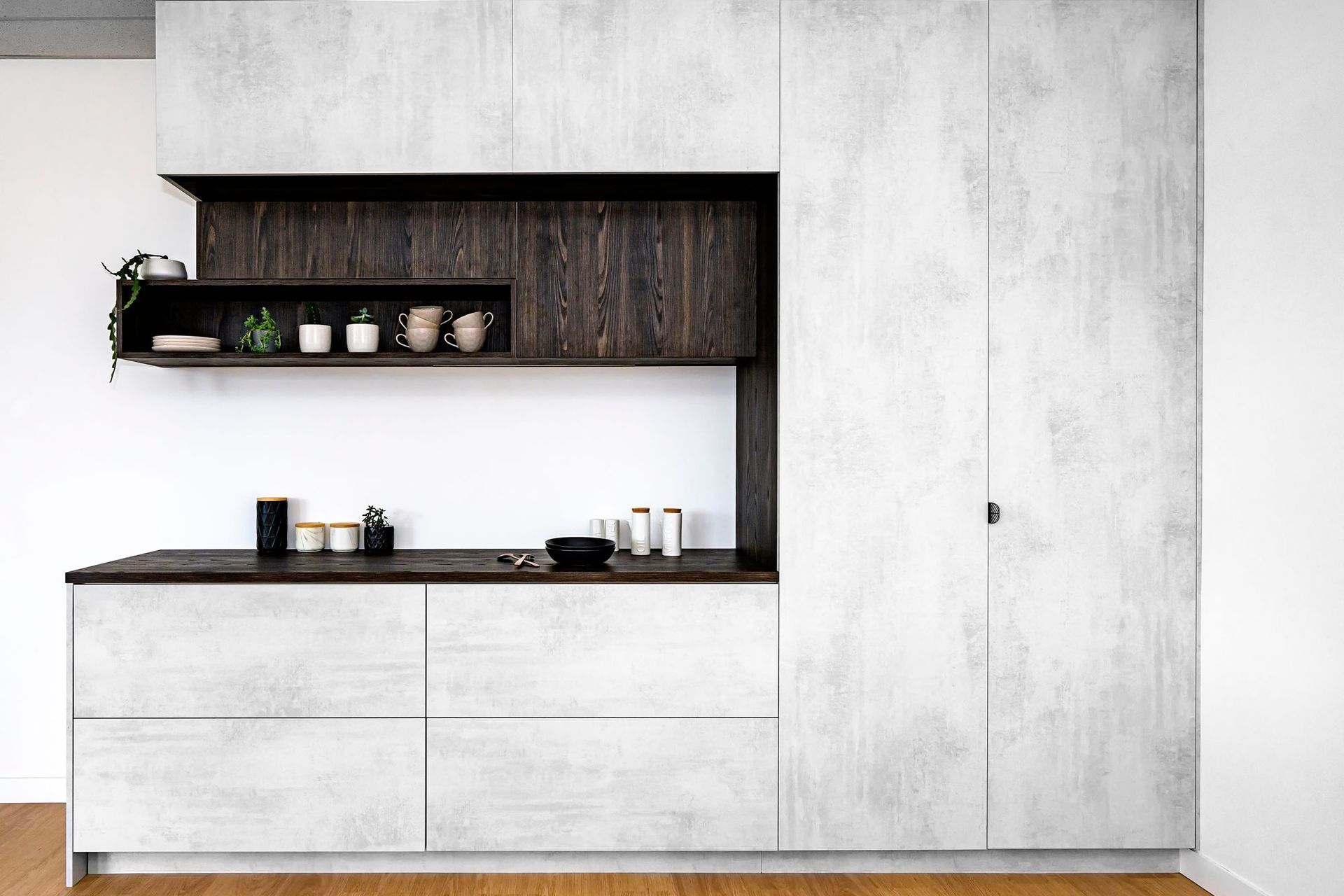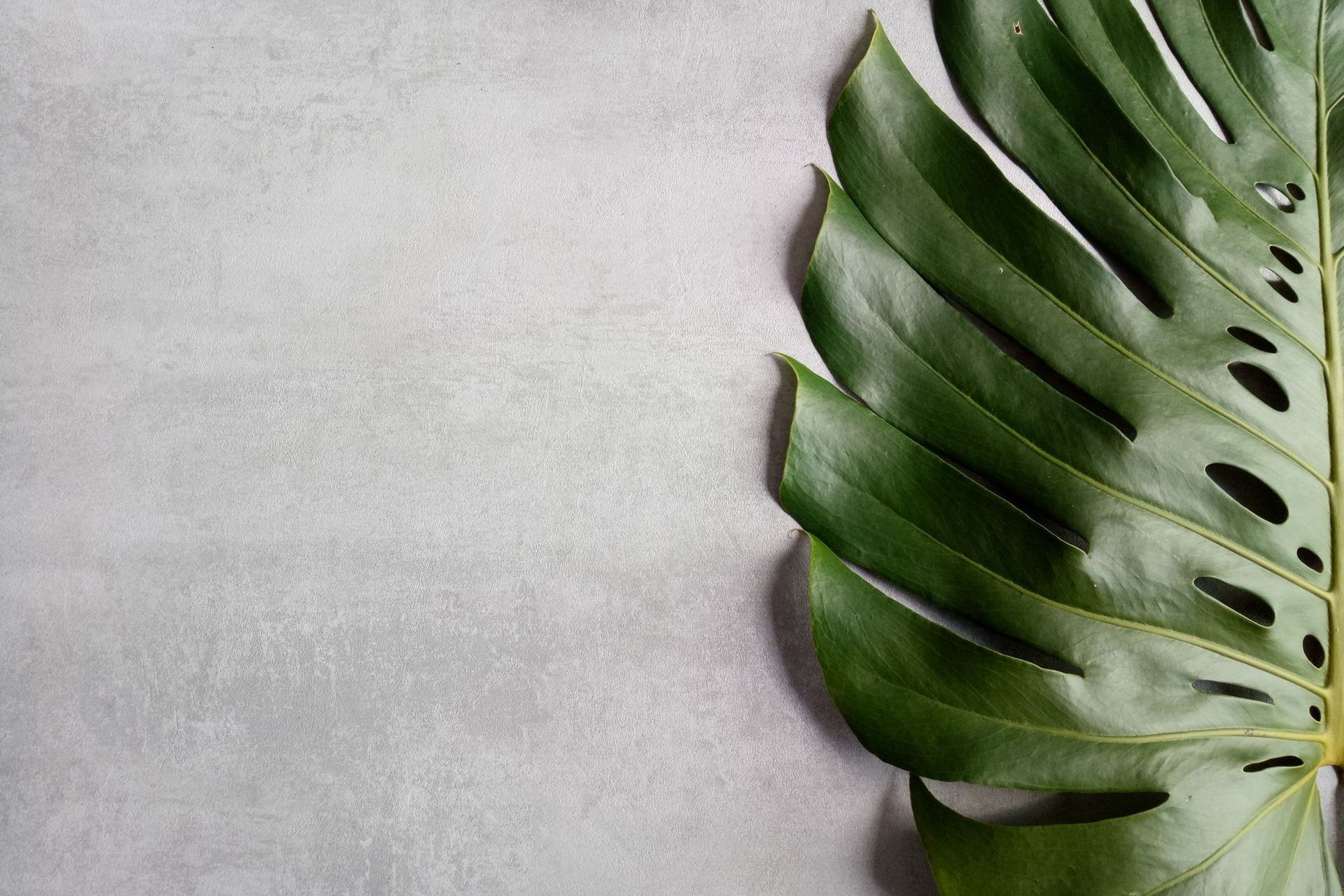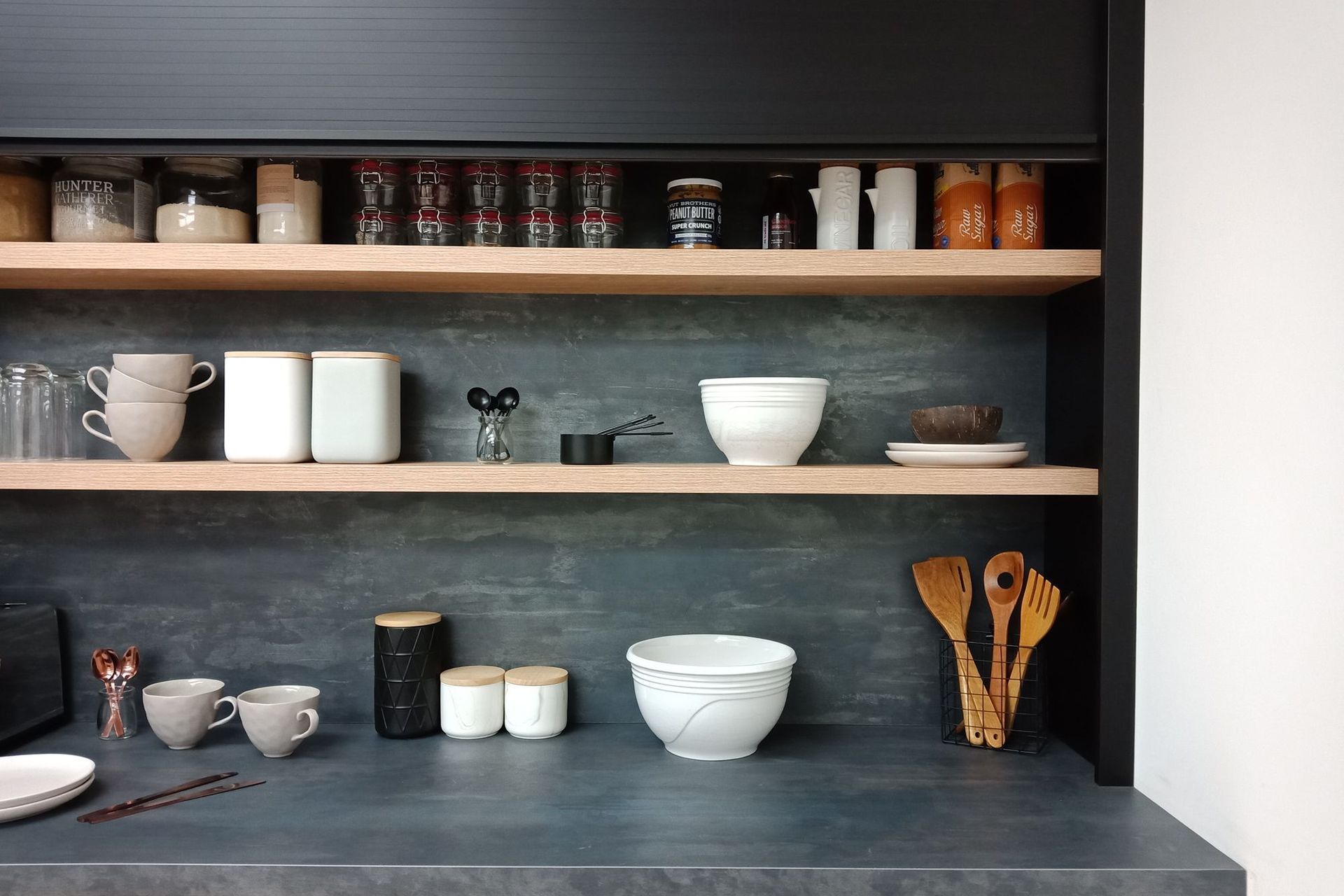Concrete is the new white: design ideas for the kitchen
Written by
11 February 2020
•
3 min read

Hand-troweled concrete has a unique and instantly recognisable appearance. Its slightly rough texture gives each panel a unique textural form. While concrete is now used for all manner of interior applications, it is still associated with an industrial aesthetic.
This in itself is a drawcard for designers and clients alike, as homes – and kitchens in particular – are re-envisaged with a freer palette of both form and colour. The traditional stark white kitchen is a concept that’s firmly rooted in the past as a more natural and free-flowing aesthetic, of both hue and texture, now represents the contemporary kitchen. Natural undertones and softer forms are key, along with a preference for multiple materials and tones to create deep, dynamic forms.
Bringing concrete into the kitchen
Just over a year ago, Sage Doors launched a product unique to the New Zealand market; a product that offered a new take on kitchen cabinetry. “While the concrete benchtop has long been a feature of many kitchens, concrete cabinetry is something more new,” says Sage Doors’ Lydia Posthuma.
“When we launched Lookcrete, it was the first authentic concrete-look melamine product of its kind in New Zealand. It meant designers and clients could choose to create kitchens incorporating vast ‘concrete’ forms.” While Lookcrete is a melamine product, its likeness to real concrete allows for a natural look and feel – complete with the irregularity of texture that can be seen in a hand-troweled concrete surface.
What is Lookcrete?
Lookcrete is the perfect concrete alternative for interior use, Lydia says. “The realistic look, along with the durability and ease of use has led to it being used by many designers throughout home and commercial spaces. We’re seeing it used for kitchen doors, bathroom cabinetry, feature islands, waterfall end panels, wall panelling and other furniture, including bookcases, desks and reception counters.”
Versatile size options
Lookcrete sheet sizes are 2800mm x 1800mm and are available in either 18mm, 36mm or 60mm thicknesses. “These different thicknesses give lots of options when specifying the product. Doors are made at 18mm, but the 36mm and 60mm options are perfect for floating shelves, thick end panels and waterfall ends on an island.
“The unusually large sheet size is fantastic for wall panelling and feature walls, as it creates a seamless look. On the flipside, some people prefer to make block-work-looking feature walls with smaller cut panels,” Lydia says.
Lookcrete works particularly well in combination with wood grains and solid colours...
What materials work best with concrete in a kitchen?
Available in three colour options, Lookcrete can be specified to suit any project’s tonal requirements and will work with a range of different materials and surfaces.
Loutro is a light, soft grey with white tonal hues while Matala offers a more natural concrete colour and Chania is a much darker offering with a slight metallic finish and hints of blue. “Chania is ideal for feature panels due to its depth of tone and texture.
“Lookcrete, in general, works particularly well in combination with wood grains and solid colours – such as matt black or white surfaces – to create a sleek, contemporary design with a dynamic sense of depth and texture.”
Find out more about how to incorporate Lookcrete into your next kitchen project.


